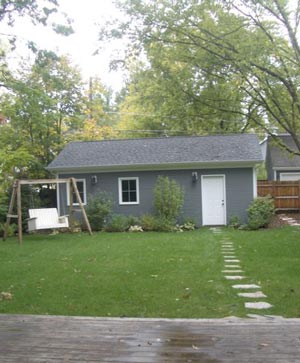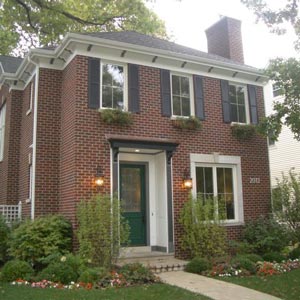Going Geothermal in Wilmette from Chicago magazine on Vimeo.
|
|
 |
List Price: $1,395,000
Sale Price: $1,327,500
The Property: On a street of mostly traditional-looking homes in Wilmette, this residence fits right in with its red brick exterior trimmed in white. But the house is a departure for its neighborhood—and for almost any other community in the Chicago area—because it has a geothermal system that relies on the cool, steady temperatures that prevail below the ground to heat and cool the house.
Although efficient and likely to become more popular in the dawning green era, geothermal systems are rare locally, and rarer still in houses that are built speculatively—that is, without a buyer already signed, as this one was. Geothermal systems pump glycol-laden water through pipes several feet below the ground surface, where the temperature stays constantly in the upper 60s. In summer, the cooled water then helps cool the air in the house; in winter, after a trip through the pipes the water partially warms the air, which then needs an additional warming boost from a furnace.
At this house, the geothermal “field” is below the back lawn. Nothing visible signals this is anything but a conventional home—just like “what’s all around us in the neighborhood,” notes Dave Mastrofski, who bought the house with his wife, Suzie, September 25th. (Both of them work in advertising and marketing.)
The five-bedroom house has several other green features, including super-thick insulation, renewably grown bamboo flooring, and energy-sipping tankless water heaters. It’s also a very attractive house, with bamboo mantels, a warm, inviting kitchen, and lots of appealing details. The rear deck was built with a cutout to accommodate an old hickory tree that towers over the yard.
The builder, Jeff Cohen of Canada & Klein Custom Construction in Winnetka, says that he incorporated many of the green features because together they should keep the house’s utility bills at about half what a conventionally built home would demand. And while he understands that a buyer who is able to afford a $1.3-million house might not be overly concerned about the gas bill, he believes that many affluent people “understand that we’ve become wasteful and we don’t have to be.”
As Mastrofski notes in the video tour, he and his wife weren’t shopping for a home with green features, but when they found this house and Cohen explained the green side, they were fully convinced. “We had to learn about all these features and what they’re here for,” Mastrofski says. “It was a tutorial from Jeff. But now when people come over to see our new house, the first place we show them is the basement”—the site of the geothermal system’s guts and other green mechanicals.
Price Points: Cohen initially priced the house at $1.75 million; he later reduced the price to $1.395 million. It’s always hard to nail down the additional costs that green features tack on to the price of a house. Mastrofski says that the comparable homes they looked at in Wilmette were priced “probably less than 10 percent lower than this.” Mastrofski acknowledges that this house was slightly beyond their price range. But, he adds, “we started doing the math on how much we would save on [utility bills] over the long term that we want to live here, and it was a very good investment.” And, he notes, as utility prices rise, the house will only look better.
Listing Agent: Judith Oberman of Coldwell Banker, 847-446-4000, judy.oberman@cbexchange.com.
 List Price: $1,395,000
List Price: $1,395,000


